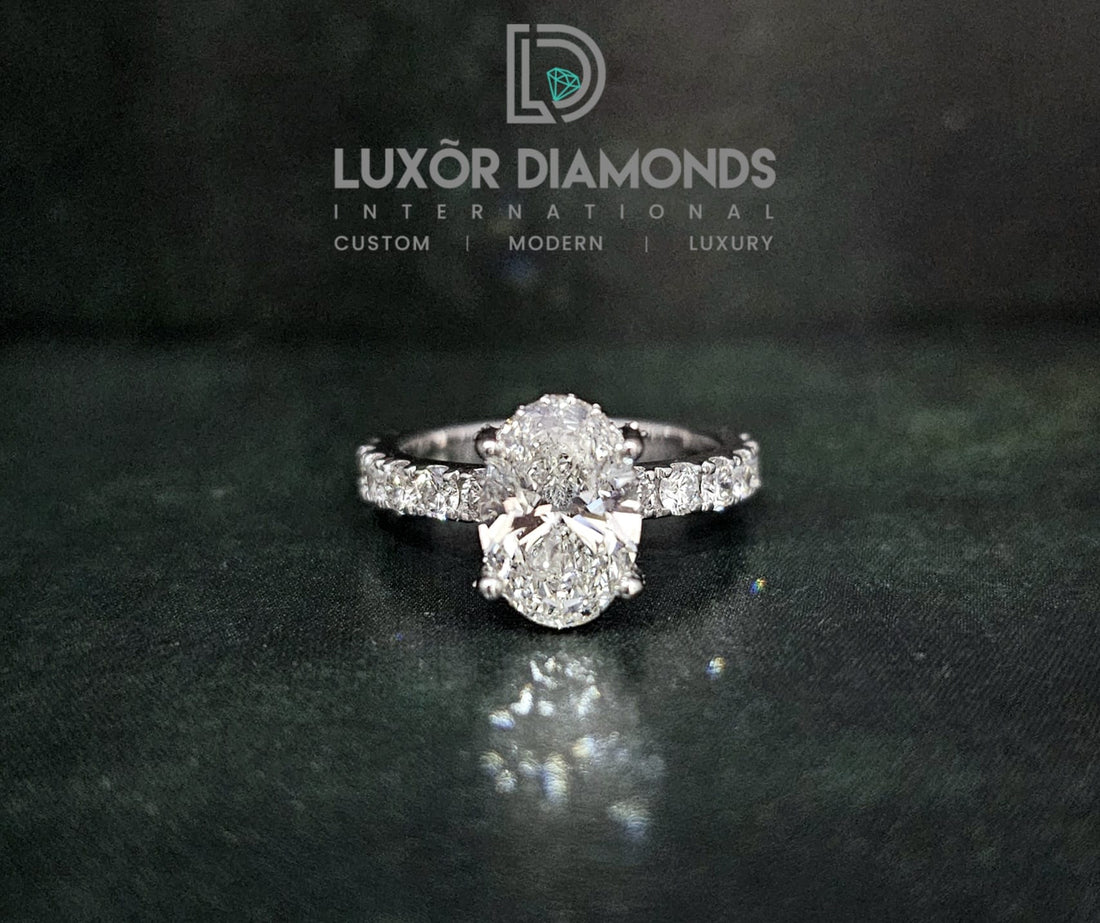
Choosing the Perfect Engagement Ring
Share
An engagement ring is more than just a piece of jewelry; it’s a symbol of love, commitment, and a promise for the future. Selecting the perfect engagement ring can feel overwhelming with so many choices available. To help you navigate this important decision, here’s a comprehensive guide to finding the perfect engagement ring.
1. Understanding the 4 Cs: Cut, Clarity, Color, and Carat
The 4 Cs are the standard criteria used to evaluate a diamond's quality. Understanding these will help you make an informed decision.
- Cut: This refers to how well the diamond has been shaped and how it interacts with light. A well-cut diamond reflects light beautifully, giving it that sought-after sparkle.
- Clarity: This measures the presence of inclusions (internal flaws) and blemishes (external flaws) in the diamond. The fewer the flaws, the higher the clarity grade.
- Color: Diamonds are graded based on the absence of color. The less color a diamond has, the more valuable it is. The scale ranges from D (colorless) to Z (light yellow or brown).
- Carat: This is the weight of the diamond. While it’s often associated with the size, a higher carat doesn’t necessarily mean a better diamond. Balance carat with the other Cs to find the perfect ring.
2. Setting the Budget
Establishing a budget early on will help you narrow down your options and ensure you don’t overspend. The traditional rule suggests spending two to three months’ salary on an engagement ring, but this is just a guideline. Focus on what you’re comfortable with and what reflects the significance of the ring.
3. Choosing the Right Setting
The setting is the metal framework in which your diamond is mounted, and it plays a significant role in the ring’s overall appearance.
- Prong Setting: This classic setting uses metal prongs to hold the diamond in place, allowing maximum light to pass through the stone, enhancing its brilliance.
- Bezel Setting: The diamond is surrounded by a metal rim, offering a sleek, modern look and added protection for the stone.
- Pavé Setting: Tiny diamonds are set close together along the band, giving the ring a continuous sparkle.
- Halo Setting: A central diamond is encircled by smaller diamonds, making the center stone appear larger and more radiant.
4. Selecting the Metal
The choice of metal can influence the ring’s appearance and durability.
- Platinum: Known for its durability and hypoallergenic properties, platinum is a popular choice for engagement rings.
- White Gold: Offers a similar look to platinum but is more affordable. It requires occasional re-plating to maintain its shine.
- Yellow Gold: A classic and timeless option that complements various skin tones.
- Rose Gold: A trendy and romantic choice with a warm, pinkish hue.
5. Considering the Diamond Shape
The shape of the diamond affects the ring's overall style. Here are some popular shapes:
- Round: The most popular and classic shape, known for its brilliance and fire.
- Princess: Square-shaped with sharp corners, offering a modern and elegant look.
- Oval: Elongated shape that can make fingers appear slimmer.
- Emerald: Rectangular with step cuts, known for its vintage appeal and clarity.
- Cushion: Square or rectangular with rounded corners, offering a soft and romantic look.
6. Personalizing the Ring
Adding a personal touch to the ring makes it even more special. Consider these options:
- Engravings: Add a meaningful date, initials, or a short message inside the band.
- Custom Design: Work with a jeweler to create a custom design that reflects your partner’s style and personality.
- Unique Stones: Consider incorporating colored gemstones or alternative diamonds like lab-grown or ethically sourced stones.
7. Getting the Right Size
Ensure the ring fits perfectly by secretly borrowing one of your partner’s rings or asking their close friends or family for help. Most jewelers offer resizing, but it’s best to get it right the first time.
8. Choosing a Reputable Jeweler
Select a jeweler with a good reputation, positive reviews, and proper certification. Ensure that the diamond comes with a grading report from a reputable lab like GIA (Gemological Institute of America) or AGS (American Gem Society).
9. Insuring the Ring
Once you’ve purchased the ring, consider getting it insured. This will protect you against loss, theft, or damage, giving you peace of mind.
Final Thoughts
Choosing an engagement ring is a significant decision that requires thoughtful consideration. By understanding the 4 Cs, setting a budget, and selecting the right setting, metal, and diamond shape, you can find a ring that perfectly symbolizes your love. Remember, the most important factor is choosing a ring that reflects your partner’s style and the unique bond you share.
